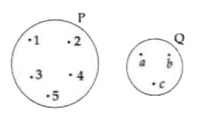Predict the mode of energy transference in the following processe.
(i) Cooking of food
(ii) Photosynthesis
(iii) Setting a cracker to fire.
To predict the mode of energy transference in the given processes, we will analyze each process step by step.
Step 1: Cooking of Food
- Analysis: Cooking involves heating food, which can occur through different methods. When food is placed in a pot over a flame, heat is transferred directly from the flame to the pot and then to the food. This is an example of conduction. Additionally, in methods like microwave cooking, heat is transferred through the movement of water molecules in the food, which is an example of convection.
- Conclusion: The mode of energy transference in cooking of food is both conduction and convection.
Step 2: Photosynthesis
- Analysis: Photosynthesis is the process by which plants convert light energy from the sun into chemical energy. The energy from sunlight is absorbed by chlorophyll in the leaves of plants. This process does not require a medium to transfer energy; it occurs through the direct absorption of light.
- Conclusion: The mode of energy transference in photosynthesis is radiation.
Step 3: Setting a Cracker on Fire
- Analysis: When a firecracker is lit, the heat from the flame is transferred directly to the cracker. This transfer occurs through direct contact between the flame and the material of the cracker.
- Conclusion: The mode of energy transference in setting a cracker on fire is conduction.
Final Summary:
1. Cooking of Food: Both conduction and convection.
2. Photosynthesis: Radiation.
3. Setting a Cracker on Fire: Conduction.
---
- Analysis: Cooking involves heating food, which can occur through different methods. When food is placed in a pot over a flame, heat is transferred directly from the flame to the pot and then to the food. This is an example of conduction. Additionally, in methods like microwave cooking, heat is transferred through the movement of water molecules in the food, which is an example of convection.
- Conclusion: The mode of energy transference in cooking of food is both conduction and convection.
- Analysis: Photosynthesis is the process by which plants convert light energy from the sun into chemical energy. The energy from sunlight is absorbed by chlorophyll in the leaves of plants. This process does not require a medium to transfer energy; it occurs through the direct absorption of light.
- Conclusion: The mode of energy transference in photosynthesis is radiation.
- Analysis: When a firecracker is lit, the heat from the flame is transferred directly to the cracker. This transfer occurs through direct contact between the flame and the material of the cracker.
- Conclusion: The mode of energy transference in setting a cracker on fire is conduction.
1. Cooking of Food: Both conduction and convection.
2. Photosynthesis: Radiation.
3. Setting a Cracker on Fire: Conduction.
Topper's Solved these Questions
- CHEMICAL THERMODYNAMICS Book:ICSEChapter:CHEMICAL THERMODYNAMICS Exercise:REVIEW EXERCISES (Fill in the blanks )
Explore 6 Videos
- CHEMICAL THERMODYNAMICS Book:ICSEChapter:CHEMICAL THERMODYNAMICS Exercise:VERY SHORT ANSWER TYPE QUESTIONS
Explore 56 Videos
- CHEMICAL THERMODYNAMICS Book:ICSEChapter:CHEMICAL THERMODYNAMICS Exercise:NCERT TEXT-BOOK. EXERCISES
Explore 22 Videos
- CHEMICAL BONDING AND MOLECULAR STRUCTUREBook:ICSEChapter:CHEMICAL BONDING AND MOLECULAR STRUCTUREExercise:NCERT TEXT-BOOK EXERCISES ( WITH HINTS AND SOLUTIONS)
Explore 47 Videos
- CLASSIFICATION OF ELEMENTS AND PERIODICITY IN PROPERTIESBook:ICSEChapter:CLASSIFICATION OF ELEMENTS AND PERIODICITY IN PROPERTIESExercise:NCERT TEXT-BOOK. EXERCISE (With Hints and Solutions)
Explore 63 Videos
Similar Questions
Describe the following processes:
(i) dialysis
(ii) Electrophoresis
(iii) tyndall effect
View SolutionExplain how the phenomenon of pdsorption finds application in each of the following processes :
(i) Production of vacuum
(ii) Heterogeneous catalysis
(iii) Froth Floatation process
View SolutionPredict the modes of occurrence of the following three types of metals:
(i) Highly reactive (e.g., Na)
(ii) Moderately reactive (e.g., Fe)
(iii) Noble metal (e.g., Au)
View SolutionExplain how the phenomenon of adsorption finds application in each of the following processes:
(i) Production of vacuum (ii) Heterogeneous catalysis (iii) Froth floatation process
View SolutionComplete the following reaction : i.

ii.
iii.
iv.
View SolutionIdentify the wrong statements from the following : (i) Branches of limited growth in Aspargus perform photosynthesis (ii) Petiole of Australian Acacia helps in climbing (iii) Floral buds of Agave store food materials (iv) Aerial roots of Taeniophyllum helf in vegetative propagation
View SolutionFrom the adjoining Venn diagram , find the following sets :

(i) P
(ii) Q
(iii) P∪Q
(iv) P∩Q
View SolutionDefine the followings:
(i) Nuclear fission (ii) Nuclear fusion (iii) Binding energy.
View SolutionDraw a schematic diagram showing the (i) ground wave (ii) sky wave and (iii) space wave propagation modes for em waves.
Write the frequency range for each of the following :
(i) Standard AM broadcast (ii) television (iii) Satellite communication
View SolutionState the energy transformation in the following:
(i) electricity is obtained from solar energy.
(ii) electricity is obtained from wind energy.
(iii) electricity is obtained from hydro energy.
(iv) electricity is obtained from nuclear energy.
View Solution